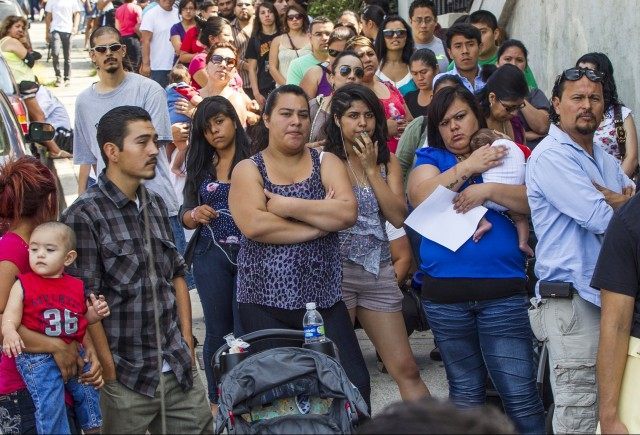The majority of American teenagers learned valuable life lessons about earning money and taking responsibility from the end of World War II until a series of immigrant amnesties in the late 1990s started replacing them with cheap immigrant labor.
The ‘Labor Participation Rate’ for teenagers 16 to 19 years old has plummeted by 36 percent, since 2000 from 55 percent to below 35 percent. The Labor Force Participation rate for 20-to-24-year olds has also fallen by over 8 percent, from 79 percent to 70 percent. Rather than some change in youth ambition, a published report by the U.S. Federal Reserve late last year, “Labor Force Participation: Recent Developments and Future Prospects,” blames this crash on a flood of immigrant labor that has displaced native-born kids from jobs at higher percentages rates than adults.
The Fed stated that “the increase in the population of less educated immigrants has had a considerably more negative effect on employment outcomes for native youth than for native adults. At least two factors are at work: there is greater overlap between the jobs that youth and less educated adult immigrants traditionally do, and youth labor supply appears more responsive to immigration-induced wage changes.”
Liberals blame President Ronald Reagan for his 1985 Immigration and Reform Control Act that gave blanket amnesty to some 2.7 million illegal aliens, many of whom had been in the U.S. for many decades. But the majority of the amnesties happened during the administration of President Bill Clinton.
Despite running as a “get tough on immigration” candidate, Clinton passed six separate amnesty bills during his two terms that gave legal status to at least 3.1 million: the 1997 Section 245 Extension amnesty; the 1997 Nicaraguan Adjustment and Central American Relief amnesty for close to one million illegal aliens from Central America; the 1998 Haitian Refugee Immigration Fairness Act amnesty for 125,000 illegal aliens from Haiti; the 2000 amnesty for 400,000 illegal aliens who claim they should have been amnestied under the 1986 IRCA amnesty; and the 2000 LIFE Act amnesty reinstatement of the rolling Section 245 amnesty for an estimated 900,000 illegal aliens.
From 2009 to 2011, teenage unemployment peaked at 27.2 percent. The incredibly high rates have only started coming down since 2013. The most recent teenage unemployment rate remains an elevated 18 percent.
All native-born teenagers have suffered significant job losses since 2000. But teenage boys now have an unemployment rate of 20.4 percent, as compared to native teenage girls of 15.8 percent. This 4.6 percent disadvantage for teenage boys has more than tripled from a 1.8 percent at the turn of the century.
The Obama administration has actually changed the vocabulary for illegal aliens to “undocumented workers.” But that just proves the point that liberals are really all about wage breaking.
If an employer hires a native-born young person, he/she will need to have a Social Security number so that the state they operate in can monitor if the employer is paying the 30 percent premium for employment taxes, worker’s compensation insurance, and maybe even providing Obamacare.
But an audit by the Office of the Inspector General found there are 6.5 million U.S. Social Security Numbers for persons 112 years or older on the active Social Security roster. The U.S. Inspector General “confirmed that illegal aliens were using deceased number holders’ names and SSNs to work, but U.S. Attorneys in California, Arizona, Florida, and South Carolina declined prosecution.”
Native-born American teenagers are as much in need of gaining valuable life lessons about earning money and taking responsibility as their parents and grand-parents were. It is not their lack of ambition, but rather politicians’ unwillingness to secure the borders and police hiring of illegal aliens that are causing young people real harm.

COMMENTS
Please let us know if you're having issues with commenting.